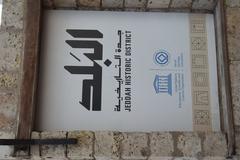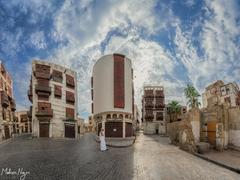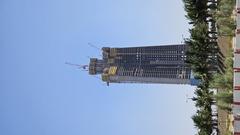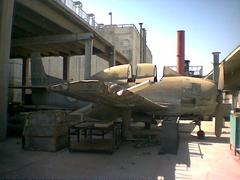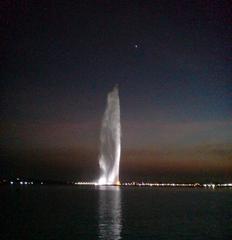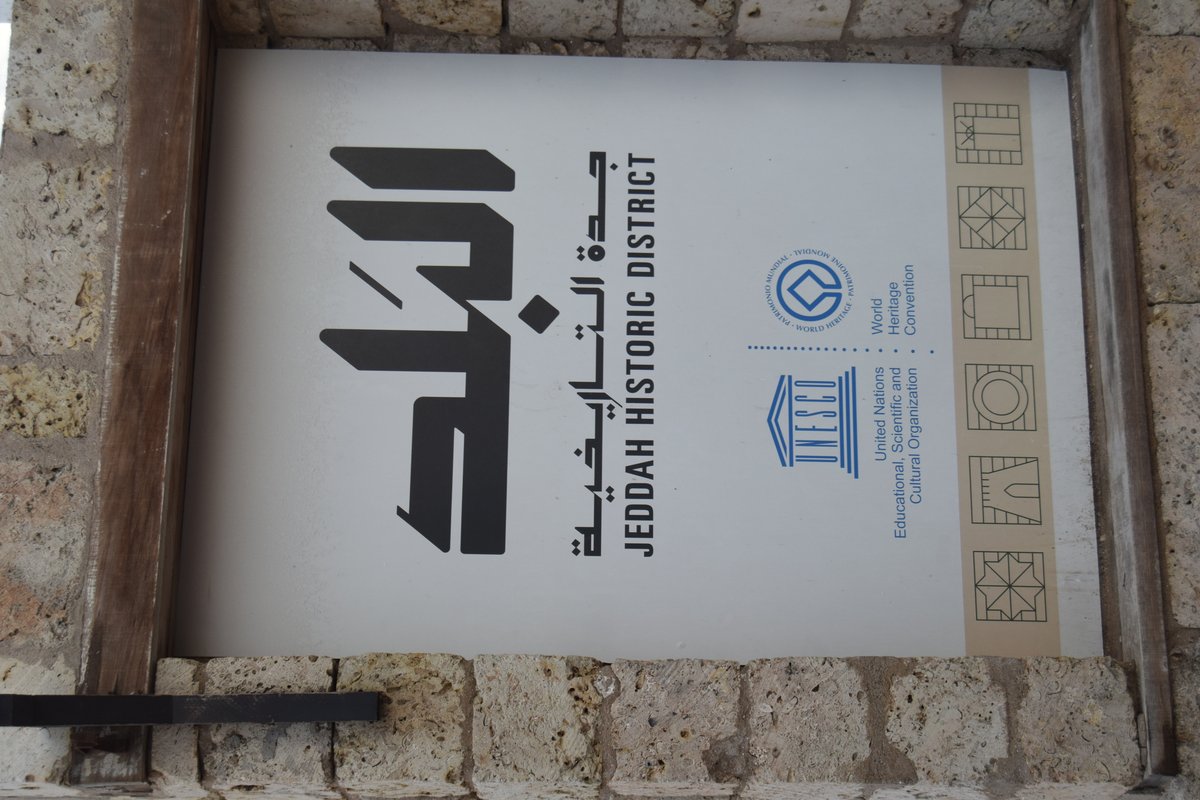
Al-Balad Jeddah: Comprehensive Guide to Visiting Hours, Tickets, and Historical Sites
Date: 14/06/2025
Introduction
Al-Balad, meaning “The Town” in Arabic, is the historic core of Jeddah, Saudi Arabia. Established in the 7th century CE, it has served as a vital port and gateway for Muslim pilgrims journeying to Mecca, as well as a thriving hub for merchants from Africa, Asia, and beyond. Its coral-stone buildings, intricate wooden rawasheen (latticework balconies), and labyrinthine lanes reflect a rich fusion of Hijazi craftsmanship and multicultural influences. Recognized as a UNESCO World Heritage Site in 2014, Al-Balad stands today as a living testament to centuries of commerce, pilgrimage, and artistic exchange, offering visitors a window into Jeddah’s vibrant past and evolving cultural identity (Wikipedia; UNESCO; 3Rooj; Wasalt Blog).
This guide provides a detailed overview of Al-Balad’s history, key heritage sites, visiting hours, ticketing, accessibility, and travel tips, ensuring you have all the information needed for a memorable journey into Jeddah’s historic district.
Table of Contents
-
Historical Overview
-
Visiting Al-Balad
-
Experiences in Al-Balad
-
Practical Information
-
FAQ
-
Conclusion
-
Sources
1. Historical Overview
Origins and Early Development
Al-Balad’s roots trace back to the 7th century CE, when Jeddah rose as a prominent Red Sea port (Wikipedia; 3Rooj). Its strategic location made it the primary entry point for pilgrims heading to Mecca and a bustling center for international trade. Originally fortified with walls and gates, Al-Balad’s urban fabric developed around commerce and religious significance, a legacy evident in its dense network of streets and marketplaces (ITB News).
Growth as a Trade and Pilgrimage Hub
Proximity to Mecca cemented Al-Balad’s role as a cosmopolitan crossroads. The constant influx of pilgrims and merchants fostered an atmosphere of diversity, leading to the construction of grand merchant houses, souks, and religious institutions. The district’s architecture—characterized by coral-stone walls and rawasheen balconies—was both functional and emblematic of Hijazi culture (Wasalt Blog).
Architectural and Cultural Heritage
Al-Balad is home to over 650 historic buildings, 36 mosques, and 24 ribats, many exemplifying traditional Hijazi architecture. The rawasheen windows, carved from wood, provide shade and ventilation while offering privacy. Landmarks like Nassif House, Al-Alawi Souk, and Al-Shafi’i Mosque stand as icons of Jeddah’s heritage (ITB News; Wasalt Blog).
Key Historical Events and Preservation
Under Ottoman rule, Al-Balad flourished as a trade and administrative center. The 20th century brought urban expansion, leading to the removal of the city’s defensive walls and, eventually, the decline of some historic structures. Preservation efforts began in earnest in the 1970s and accelerated after UNESCO World Heritage designation in 2014. Saudi Arabia’s Vision 2030 has further spurred restoration and tourism development, including major investment in restoration and cultural infrastructure (Wikipedia; UNESCO).
2. Visiting Al-Balad
Visiting Hours and Tickets
- District Access: Open daily, generally from 9:00 AM to 10:00 PM.
- Museums and Historic Houses: Most operate from 9:00 AM to 5:00 PM, Sunday to Thursday; closed or shorter hours on Fridays and during prayer times.
- Entry Fees: The district itself is free to enter. Museums and historic houses (e.g., Nassif House, Matbouli House) typically charge SAR 10–30. Tickets can be purchased on-site or via official tourism platforms (Culture Activities).
Accessibility
While main streets are being improved for accessibility, the district’s historic layout means some alleys are narrow and uneven. Main attractions are accessible to most visitors, but wheelchair users or those with limited mobility should plan routes and consider guided tours that accommodate special needs (Regency Holidays).
Guided Tours and Special Events
Guided tours are highly recommended for in-depth historical and cultural insights. Tours are available in multiple languages and may focus on architecture, heritage, or food. Annual festivals like Balad Al Fann and Balad Beast enliven the district with art, music, and cultural events (EDM Nomad; Destination KSA).
Travel Tips
- Best Time to Visit: October–March (cooler weather), early mornings or evenings for a lively atmosphere.
- Dress Code: Modest attire is required; women should wear an abaya and cover their hair, men should avoid shorts.
- Respect Local Customs: Shops close during prayer times, and permission should be sought before photographing people.
- Essentials: Wear comfortable shoes for walking, bring water, and carry cash for small purchases.
Nearby Attractions
- Jeddah Corniche: Waterfront promenade with parks and sculptures.
- Floating Mosque: Iconic mosque built on the Red Sea.
- Red Sea Mall: For modern shopping and dining.
- Abdul Raouf Khalil Museum: Showcasing Jeddah’s history.
3. Experiences in Al-Balad
Historic Houses and Museums
- Nassif House (Bayt Nassif): Former home to a prominent merchant family, now a museum with 106 rooms and a grand staircase.
- Matbouli House Museum: Preserved residence showcasing traditional furnishings.
- Al Jamjoom House: Notable for its intricate woodwork.
These heritage homes offer a glimpse into 19th- and early 20th-century Jeddah life (Salt & Charcoal).
Souks and Markets
- Souk Al-Alawi: Bustling market for spices, textiles, perfumes, and crafts.
- Souk Qabil: Renowned for jewelry and traditional clothing.
- Artisan Workshops: Discover craftspeople practicing woodcarving, weaving, and more (Culture Activities).
Religious and Cultural Landmarks
- Al-Shafi’i Mosque: Features an ancient minaret and serene courtyard.
- Al-Memar Mosque: Dates to the 14th century, exemplifying simple elegance.
Culinary Experiences
Sample local specialties such as mutabbaq (stuffed pancake), saleeg (creamy rice with meat), and samoli bread. Many historic homes now host atmospheric cafés serving Saudi coffee and traditional snacks (Salt & Charcoal).
Art and Photography
Al-Balad is a photographer’s paradise. Capture rawasheen balconies, colorful markets, and hidden courtyards. Rooftop terraces offer panoramic views of the old city and Red Sea.
4. Practical Information
Getting There
Al-Balad is centrally located in Jeddah and easily accessible by taxi, ride-hailing apps (Uber, Careem), and public buses (Bab Makkah Bus Station is nearby). Parking is limited, so public transport is recommended (Go Saudi Arabia Trips).
Dress Code and Etiquette
- Women: Abaya and headscarf required.
- Men: Long trousers and sleeved shirts.
- General: Modesty is expected; remove shoes in mosques, avoid loud behavior, and ask before taking photographs (Foot on the Road).
Safety and Comfort
Al-Balad is safe and welcoming, including for solo female travelers. Stay hydrated, use sunscreen, and visit during busier hours for a lively atmosphere (The Wandering Quinn).
Facilities and Amenities
Restrooms are limited; cafes often provide facilities for customers. Bring cash, as not all shops accept cards. Free Wi-Fi is available in some cafés, though coverage may vary.
Language and Communication
Arabic is the official language, but English is widely spoken in tourist areas. Basic Arabic greetings are appreciated.
5. Frequently Asked Questions (FAQ)
Q: What are Al-Balad’s visiting hours?
A: The district is generally open from 9:00 AM to 10:00 PM. Museums and houses operate from 9:00 AM to 5:00 PM, Sunday–Thursday.
Q: Is there an entrance fee to Al-Balad?
A: Entry to the district is free. Some museums and houses charge SAR 10–30.
Q: Is Al-Balad accessible for people with disabilities?
A: Main thoroughfares are accessible, but some areas may be challenging due to uneven streets. Contact tour operators for assistance.
Q: Are guided tours available?
A: Yes, in multiple languages. Advance booking is recommended for specialized tours.
Q: What is the best time to visit?
A: Cooler months (October–March), preferably early morning or late afternoon.
Q: How do I get tickets for museums?
A: Purchase on-site or via official tourism websites.
6. Conclusion
Al-Balad is a captivating blend of history, culture, and architectural ingenuity. Its status as a UNESCO World Heritage Site and ongoing revitalization under Vision 2030 make it an essential destination for anyone interested in Saudi Arabian heritage. Enjoy its atmospheric souks, grand merchant houses, lively festivals, and warm hospitality. For an enriched experience, join guided tours, respect local customs, and plan your visit during cooler months. Download the Audiala app for the latest updates, interactive maps, and insider tips. Embark on your journey to Al-Balad and experience the heart of Jeddah’s legacy.
7. Sources
- Wikipedia
- 3Rooj
- Timeline Daily
- ITB News
- Wasalt Blog
- UNESCO
- EDM Nomad
- Culture Activities
- The Wandering Quinn
- Destination KSA
- Salt & Charcoal
- Go Saudi Arabia Trips
- Regency Holidays
- Travel Buddies
- The Top Tours
- Foot on the Road
- Grand Park Jeddah
